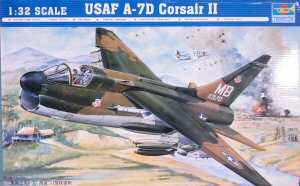
Trumpeter 1/32 A-7D Corsair II Kit First Look
By Michael Benolkin
| Date of Review | April 2006 | Manufacturer | Trumpeter |
|---|---|---|---|
| Subject | LTV A-7D Corsair II | Scale | 1/32 |
| Kit Number | 2245 | Primary Media | Photo-Etch, Styrene |
| Pros | Nice cockpit, avionics bays, external stores options | Cons | |
| Skill Level | Intermediate | MSRP (USD) | $139.95 |
First Look
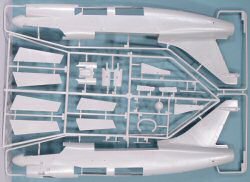 |
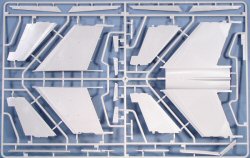 |
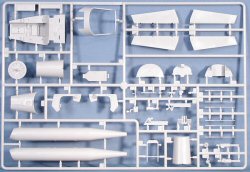 |
 |
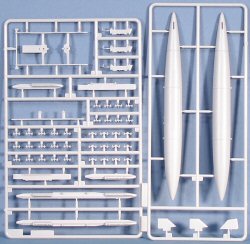 |
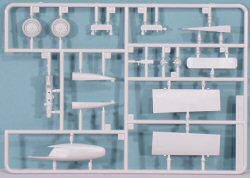 |
 |
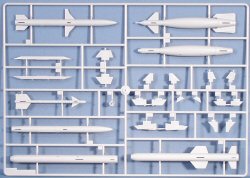 |
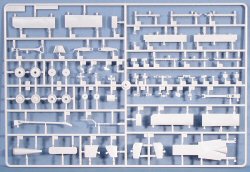 |
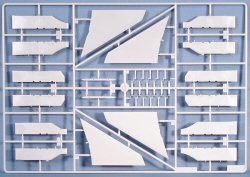 |
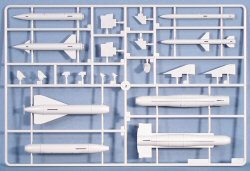 |
 |
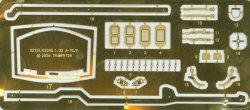 |
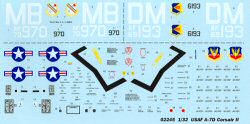 |
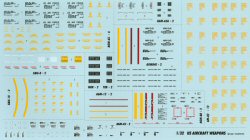 |
The US Air Force was facing the consequences of their aircraft acquisition strategies that were centered around fighting a nuclear war. Among the aircraft acquired in the "Century Series", none were designed for the 'down and dirty' close air support and interdiction missions the Air Force faced in Vietnam. As a quick-fix to the problem, the Air Force 'borrowed' a number of A-1 Skyraiders for the mission and dragged a number of supersonic fighter pilots back a half-century to learn to fly a piston-powered tail dragger. The Skyraider answered the short-term problem, and once again, the Air Force turned to the Navy to solve the longer-term solution - acquisition of a 'modern' CAS aircraft. For that role, they piggy-backed on the LTV production of the A-7 Corsair II. The Air Force acquired the single-seat A-7D and later the two-seat A-7K.
The A-7D was very similar to the US Navy's final installment of the Corsair II family - the A-7E. It was powered by the TF41 turbofan engine, armed with a single M61 Vulcan 20mm gatling gun, and featured advanced avionics. The USAF had great success with the A-7 in Vietnam and continued to operate and develop the aircraft and its mission. By the 1980s, A-7Ds were transitioning into the Air National Guard as they were replaced with the next generation CAS aircraft - the A-10 Thunderbolt II.
Here is the second Corsair II release from Trumpeter - the USAF A-7D. Who would have ever imagined we'd have a SLUF in 1/32 scale, much less two? Like the A-7E, this kit is absolutely beautiful.
Molded in light gray styrene, the kit consists of 682 parts and is presented on 21 parts trees (duplicate trees not shown) plus two small trees containing the clear parts and separately protected canopy and windscreen. In addition, the kit features two frets of photo-etch, rubber tires, and white metal landing gear struts.
What is different about this release are essentially two trees. I used the images from the A-7E release as they were shot against a different colored background to highlight the new trees. The first new tree is the top image that contains the new fuselage halves that have removed the fairing for the air refueling probe and added a block under the rear fuselage for the chaff/flare launchers. The other tree has the revised main wheel hubs, USAF-type air refueling receiver fairing, and a few other parts. Pave Penny is provided under the intake lip.
As with the first A-7 release, the cockpit tub looks rather plain, but with the separately molded side consoles and the nice instrument panel, the cockpit looks right. Even the ejection seat is done well, complete with photo-etched seatbelts and harnesses.
The main wheel wells are quite busy with the plumbing and the various pressure bottles inside, very nicely done!
The kit features a nice-looking M61 Vulcan for the port-side nose, but all you'll ever see are the tips of the barrels.
The wing goes together very straightforward as is its mounting on the fuselage. There should be no surprises here. The leading and trailing edge flaps look to be positionable (separately molded) but the instructions show them installed up and locked. The six underwing weapons stations are also nicely rendered down to the anti-sway braces.
The main landing gear is provided as white metal or styrene (your choice) while the nose gear is heavy duty enough to be styrene.
Here's one option that I'm not too certain what they were thinking about - the ventral speed brake can be positioned open. The hydraulic ram definitely poses that speed board all the way out. This is great if you're posing the model in flight (though you'll need to rework the landing gear to look unloaded or simply raise them, close up the avionics bays, and find a pilot) but the SLUF sits low to the ground and if I recall the A-7D Dash One correctly, the speed brake is not available when the gear is down to prevent a crunching metallic sound when landing.
The outer wing panels can be posed folded or unfolded.
The external stores in the kit are equally impressive. You have two external fuel tanks for stations 3 and 6. An optional LANA (Low Altitude Night Attack) pod included to replace one of the external fuel tanks. In addition, the kit provides:
- 2 x AIM-9D/G/H Sidewinder
- 2 x GBU-8 HOBOS
- 2 x GBU-10 Paveway
- 2 x AGM-12 Bullpup
- 2 x AGM-45 Shrike
- 2 x AGM-62A Walleye
- 6 x AGM-65 Maverick
- 2 x AGM-84E SLAM
- 2 x AGM-88 HARM
- 12 x Mk.82 Snakeyes
- 12 x Mk.82 Slicks with and without fuse extenders
- 6 x Mk.117
- 2 x TER
- 2 x MER
These are the same weapons trees used in the A-7E kit. Check your references for proper USAF loadouts, but one definite wave-off: if you use the AGM-84E or AGM-88 missiles with the A-7D, be prepared to hear goat noises from other IPMS'ers.
There are two decal sheets included in this kit. The first one contains markings for two aircraft options:
- A-7D-8-CV, 70-970, 356 TFS/354 TFW, Myrtle Beach AFB
- A-7D-3-CV, 69-6193, 357 TFS/355 TFW, Davis Monthan AFB
The other decal sheet is nothing but weapons stencils. Lots of weapons (and pylon) stencils. This is going to be one beautiful aircraft with all of this!
As usual, this is an incredible work of art. Trumpeter has certainly done it again. Add this awesome array of armament, and you're going to want more than one of these kits. This one is definitely recommended!
I wonder if we can get Trumpeter to re-release these weapons trees and decals as separate weapons kits? Wouldn't that be handy?
My sincere thanks to Stevens International for this review sample!







